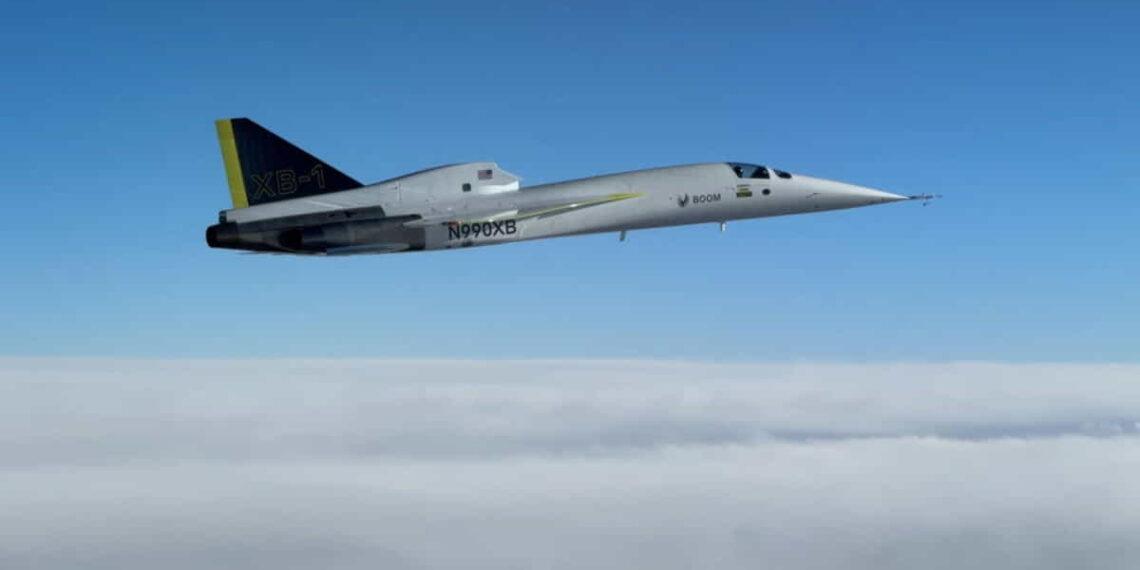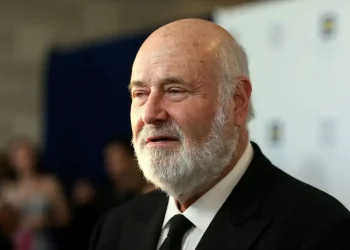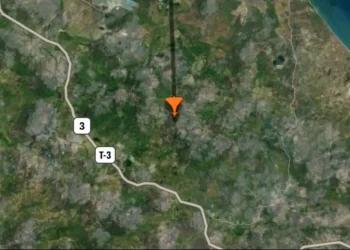Boom Supersonic Achieves Historic First Supersonic Flight: America’s Answer to Concorde
On January 28, Boom Supersonic marked a major milestone in aviation history with the successful first supersonic flight of its XB-1 aircraft, signaling the potential return of faster-than-sound air travel. This flight, conducted in Mojave, California, is a significant step towards the development of Boom’s supersonic commercial airliner, Overture.
Breaking the Sound Barrier: A Milestone in Aviation
Boom’s XB-1 demonstrator, an independently developed jet, became the first of its kind to break the sound barrier, a groundbreaking achievement. The aircraft, piloted by Boom’s chief test pilot Tristan “Geppetto” Brandenburg, reached a speed of Mach 1.122 (652 knots or 750 miles per hour) at 35,000 feet—about 10% faster than the speed of sound. The flight took place in the same historic Mojave airspace where legendary pilot Chuck Yeager first broke the sound barrier in 1947.
The XB-1 had previously flown at subsonic speeds, with its highest speed of Mach 0.95 achieved during its January 10 test flight. This flight on January 28 marked a leap forward in Boom’s ambitions, proving the viability of supersonic technology for future commercial aviation.
A Vision for the Future: Overture and the Return of Supersonic Travel
Boom’s XB-1 is just the beginning. The company’s vision is to revolutionize air travel with Overture, a supersonic airliner capable of flying at Mach 1.7—nearly twice the speed of today’s subsonic planes. Scholl, Boom’s CEO, has expressed confidence that Overture will be operational by the end of the decade, ushering in a new era of faster, more efficient air travel.
With over 130 orders and pre-orders from American Airlines, United Airlines, and Japan Airlines, the demand for supersonic travel is already strong. Scholl’s ultimate goal is for Overture to operate on more than 600 routes globally, making air travel faster and more accessible. He envisions a future where supersonic planes allow passengers to fly anywhere in the world in just four hours, at an affordable price.
Reducing Costs and Environmental Impact
Boom’s supersonic vision extends beyond speed. Scholl believes that faster airplanes will reduce operational costs and environmental impact. By flying more efficiently, supersonic planes could cut down on the need for multiple aircraft and crews, making air travel both capital- and human-efficient.
Like Concorde, Boom’s supersonic planes will feature a long nose for improved aerodynamics during takeoff and landing. However, Boom has addressed the issue of limited pilot visibility by developing an augmented reality vision system, which eliminates the need for the bulky, moveable droop nose used by Concorde.
Technological Innovations Driving Supersonic Flight
Boom’s success is largely due to advancements in digital engineering. Unlike the costly and time-consuming physical wind tunnel tests that were used to develop Concorde, Boom relies on computational fluid dynamics (CFD), which allows the company to simulate hundreds of wind tunnel tests overnight at a fraction of the cost. This digital approach has enabled Boom to design an aerodynamically efficient aircraft while using materials like carbon fiber composites, which offer strength and lightweight properties ideal for supersonic flight.
Another key innovation is Boom’s use of sustainable aviation fuel (SAF). While SAF is not yet widely available, Scholl believes it is the future of aviation. Overture is designed to run on up to 100% SAF, reducing the environmental impact of long-haul flights.
The Road Ahead: The Overture Superfactory and Scaling Production
In preparation for mass production, Boom completed construction of its Overture Superfactory in Greensboro, North Carolina, in 2024. The facility is designed to scale production, with plans to manufacture up to 66 Overture aircraft per year once it is fully operational.
A New Era of Air Travel
As the world watches Boom Supersonic’s progress, Scholl’s dream of a future where supersonic flights are routine and affordable is becoming more tangible. With technological advancements, an environmentally conscious approach, and the backing of major airlines, Boom is well-positioned to bring supersonic travel back to the skies—revolutionizing the aviation industry for generations to come.
This historic achievement brings us closer to a future where air travel is faster, more efficient, and environmentally friendly. The race to revive supersonic flight is on, and Boom Supersonic is leading the charge.
This article was rewritten by JournosNews.com based on verified reporting from trusted sources. The content has been independently reviewed, fact-checked, and edited for accuracy, neutrality, tone, and global readability in accordance with Google News and AdSense standards.
All opinions, quotes, or statements from contributors, experts, or sourced organizations do not necessarily reflect the views of JournosNews.com. JournosNews.com maintains full editorial independence from any external funders, sponsors, or organizations.
Stay informed with JournosNews.com — your trusted source for verified global reporting and in-depth analysis. Follow us on Google News, BlueSky, and X for real-time updates.














